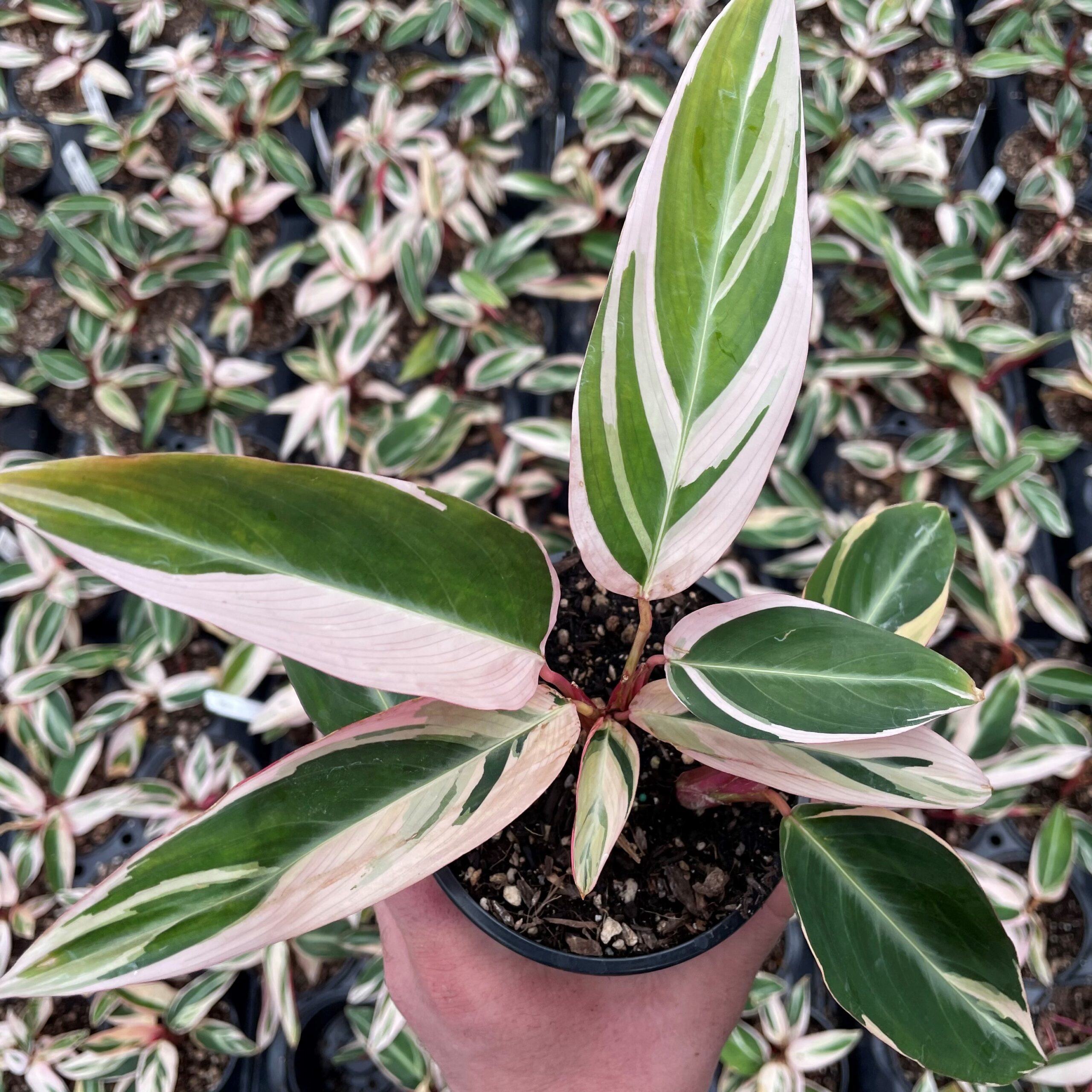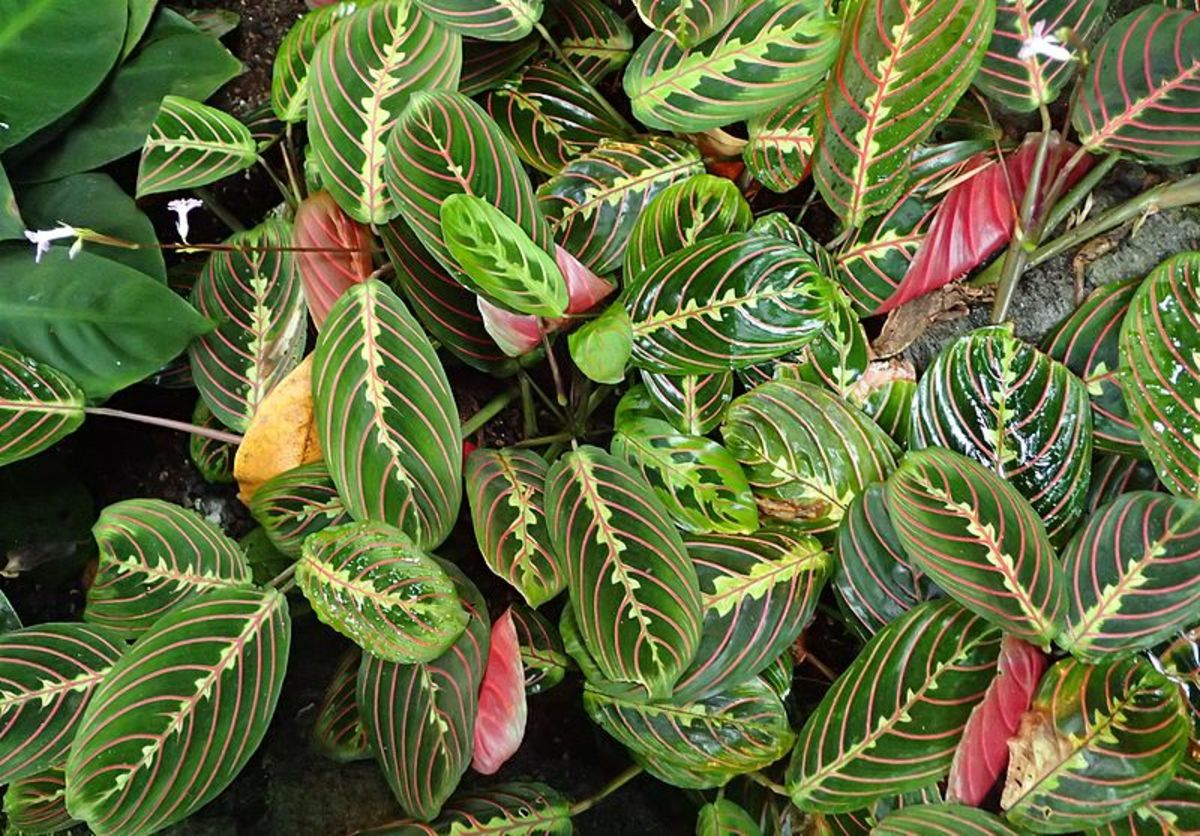Tri color prayer plant – Unveiling the Tricolor Prayer Plant, a botanical marvel renowned for its captivating foliage and air-purifying prowess, we embark on a journey to explore its unique characteristics, cultivation secrets, and diverse applications.
With its scientific classification as Maranta leuconeura ‘Tricolor,’ this prayer plant species exhibits striking tricolor foliage, featuring shades of green, cream, and pink. Its name, derived from the Greek word ‘maraino,’ meaning ‘to wither,’ alludes to the plant’s unique ability to fold its leaves at night, resembling praying hands.
Botanical Overview of Tricolor Prayer Plant

The tricolor prayer plant (Maranta leuconeura var. erythroneura) is a captivating herbaceous perennial native to the tropical rainforests of Brazil. It is renowned for its striking foliage, which features a mesmerizing blend of emerald green, burgundy, and cream hues. The plant’s common name, “prayer plant,” stems from its unique behavior of folding its leaves upward at night, resembling hands clasped in prayer.
Etymology and Scientific Classification
The genus name Maranta honors the Italian physician and botanist Bartolomeo Maranta, while the species name leuconeura means “white-veined,” referring to the prominent white veins that adorn the leaves. The variety name erythroneura translates to “red-veined,” highlighting the vibrant burgundy veins that intersect the foliage.
Physical Characteristics
Tricolor prayer plants typically grow to a height of 12-18 inches (30-45 cm) and spread to a width of 12-15 inches (30-38 cm). Their leaves are oval-shaped with pointed tips and measure 4-6 inches (10-15 cm) in length and 2-3 inches (5-7.5 cm) in width. The upper surface of the leaves showcases a vibrant mosaic of green, burgundy, and cream hues, while the underside is a uniform shade of burgundy.
Native Habitat and Environmental Preferences
Tricolor prayer plants thrive in the warm, humid environments of their native rainforests. They prefer well-drained, organic-rich soil and bright, indirect light. In cultivation, they are often grown as houseplants and require consistent moisture, humidity, and protection from direct sunlight.
Care and Cultivation of Tricolor Prayer Plant

Tricolor prayer plants, known for their striking foliage and unique movement, require specific care to thrive. Providing optimal conditions ensures their vibrant colors and healthy growth.
Watering
Water regularly, allowing the soil to dry out slightly between waterings. Avoid overwatering, as it can lead to root rot. Use room-temperature water and avoid getting water on the leaves, as it can cause spots.
Lighting
Tricolor prayer plants prefer bright, indirect light. Avoid direct sunlight, as it can scorch the leaves. If natural light is insufficient, supplement with artificial grow lights.
Fertilization, Tri color prayer plant
Fertilize monthly during the growing season with a balanced liquid fertilizer diluted to half strength. Avoid over-fertilizing, as it can burn the roots.
Common Pests and Diseases
Tricolor prayer plants are generally pest-resistant, but they can be susceptible to mealybugs, spider mites, and aphids. Inspect plants regularly and treat infestations promptly with insecticidal soap or neem oil.
Propagation
Propagate tricolor prayer plants through cuttings or division. Cuttings should be taken from healthy stems and rooted in moist potting mix. Division can be done by gently separating the plant into smaller sections and replanting them in individual pots.
Uses and Applications of Tricolor Prayer Plant: Tri Color Prayer Plant

The tricolor prayer plant is a versatile plant with a range of uses in horticulture and interior design. Its striking foliage and compact size make it an attractive addition to any space.
Traditionally, the tricolor prayer plant has been used in traditional medicine to treat various ailments. It is believed to have anti-inflammatory, antimicrobial, and antioxidant properties. However, more research is needed to fully understand the plant’s medicinal uses.
Air-Purifying Capabilities
The tricolor prayer plant is known for its ability to purify the air. It is effective at removing toxins such as formaldehyde, benzene, and trichloroethylene from the air. This makes it an ideal plant for indoor spaces, where air quality can be compromised by pollutants from cleaning products, building materials, and other sources.
Potential Health Benefits
In addition to its air-purifying capabilities, the tricolor prayer plant may also have other health benefits. Some studies have shown that exposure to plants can reduce stress levels, improve mood, and boost creativity. The tricolor prayer plant’s unique foliage and vibrant colors may contribute to these benefits.
Incorporating the Plant into Different Spaces
The tricolor prayer plant is a versatile plant that can be incorporated into a variety of indoor and outdoor spaces. It is a popular choice for terrariums and indoor gardens, where it can add a touch of color and texture. It can also be used as a tabletop plant or in hanging baskets. Outdoors, the tricolor prayer plant can be grown in shady areas or under the canopy of trees.
